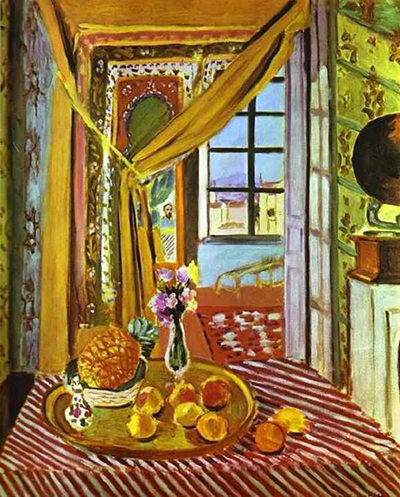Interior with Phonograph is typically Matisse, from the charming domestic scene with bright colours and abstract forms, to the summer scene which can be seen in the background through the small window.
Matisse's use of expressive colours was well suited to these types of room scenes, with still life fruit, striped furniture and sunny scenery fitted into the composition. Varying light was not common, with most of the painting saturated with the purest, brightest colour. The only change from that was often a small element of shade around the window or door, which again appears here. In Interior with Phonograph we find a small curtain which has been tied to allow light to flood in.
There are actually two sections to this room, separated by this door. This ensures that the landscape in the background is left with very little of the overall composition, so the artist reduces its detail as compared to other similar works. The phonograph here sits to the right hand side, placed above a wide cupboard. These elements are partially cropped out, allowing the focus to lead elsewhere. Behind them is a patterned yellow wallpaper which continues this busy content. Every last part of the painting contains interest. It gives the room a feeling a warmth and cosiness, rather than being crampt.
Matisse's approach to still life fruit was to create abstract, recognisable forms that did not worry about too much detail. These memorable forms could be produced with relatively few brushstrokes. They could also be used to further the idea of the direction of light coming in from the back, with a few touches of light colours to their left or right hand sides.




